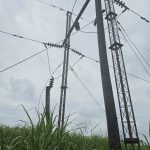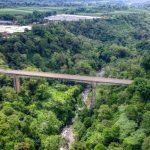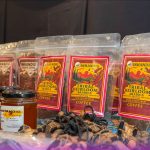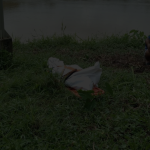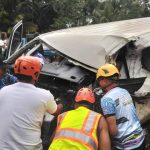CHICAGO, Illinois, US (BukidnonNews.Net/05 October 2024)—This month marks the beginning of another Philippine exercise of electing government officials in May 2025. In the province, local candidates have started filing their certificates of candidacies and mostly flashing the sign of ‘One Bukidnon’ in social media.
Can this scheme bring favor to the province?
I spent days in sketching the embroidered designs in a man’s head kerchief – a square red cloth measuring around 27 inches. The intricate embroidery works can be equated with the significance of this item. Some of its designs are found in Manobo sling bag (suning) until these days. Some names assigned to men’s head gear in Bukidnon are sulang-sulang, pinditon or tangkulu among others. They, particularly the sulang-sulang, looked like a crown of cloth having 3 or 5 bamboo splinters decorated with feathers, beads or sequins. Usually, the center splinter is the tallest among the rest. The other type of head gear is a square cloth also bearing decorated hems and the entire cloth with embroidered figures.
One noticeable characteristic of a tangkulu is the time-spent for its embroideries. The process underwent by the manunulam (embroiderer) may include reflecting the nature or interpreting dreams. The minute details may be compared to the slightest movement and the lowest tone of nature. I like to believe that in the past, time is slow and time is abundant. This could be a philosophy of time that could help this current era manage its time. The time spent for designing a tangkulu is same with the making of a leader, figuratively. The making of a leader, like a datu, is a linear process following the Panlisig, Paniib, Panumanuran, Tagulambung, Gulugundu and Linangkuban stages. Among the tribes in Bukidnon, these terms and the concepts innate with them are commonly shared though with some noticeable variance.
Panlisig refers to preparing the individual to become a leader by driving away the evil spirits from that person. It’s like a cleansing period. The elders start scouting candidates for leadership among the young by observing them particularly their endurance and interest in listening stories or teachings from the adults. Among the Higaonons, pagtulang (a night of stories) is a method used in spotting candidates for leadership among children and youth.
The Paniib is a time for practicing leadership through apprenticeship. By imitation, the leader-would-be starts to build-up routines and attitudes by learning stories, riddles or prayers from a mentor.
The Panumanuran is the polishing period when a significant ritual is conducted. This is the time when the person is introduced to the Magbabaya and to other spirits as an endorsed leader so then he would be equipped with wisdom and authority.
The Tagulambung is the stage of publicizing the ability of the person to protect and provide the needs of the people. By exercising gagaw (love) and kalalagan (generosity), the leader starts to open his ‘house’ for public use and his entire household gets ready to serve the people.
The Gulugundu is proclaiming the name of the leader who displays his influence over the population. His words are obeyed and his name rings a bell. Many will come to eat in his table. These are the justifications of his leadership.
The final stage is the Linangkuban when the leader is venerated as wise. It is the period of promulgating his influence over the neighboring regions. He is being consulted for formulas or advices from people coming from far places. The mentioned stages of indigenous leadership are stretched from teen-age (of panlisig) up to old-age (of linangkuban) and between stages are the conduct of rituals. Indigenous leadership starts from prayer and ends in prayer.
As of writing this, I remember Datu Bagangbangan who treaded upon these stages. Along with other datus in Bukidnon, they understand that political power and authority are not earned but given by the Magbabaya. Earned authority brings forth pride; and given authority brings forth humility.
Indeed, behind every material culture are narratives about the past. The square-shaped tangkulu is folded once to form a triangular piece of cloth in which the mid-base is carefully arranged in the occipital part of the head. This requires the person to bow head.
The head is wrapped by the cloth by crisscrossing the two opposite ends in the forehead and tie a knot at the back or front of the head, depending on the size of the tangkulu. The third end is liberally suspended against the forehead, not covering the eyes. The way this tangkulu is put on requires the leader to bow one’s head. For me, this is a symbolic gesture of humility.
May the candidates of Bukidnon for Philippine election 2025 find this article meaningful. One Bukidnon? I prefer, One People!
(Angaray is Binukid for female friend. The author is the Director of the Bukidnon Studies Center and a faculty member of the Sociology and Social Science Department of Bukidnon State University. She is currently in the United States as a grantee of the Fulbright Visiting Scholar Program 2024. ANGARAY’S TAKE is her column in BUKIDNON VIEWS, the opinion section of BukidnonNews.Net.)
